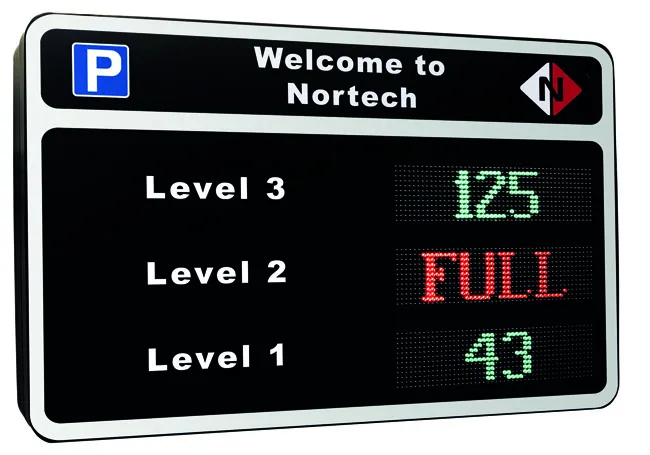
Nortech says that its newest range of full colour LED variable message signs is fully compliant with the European VMS standard EN12966.
The units are contained in a robust weatherproof IP65 aluminium housing and come either as a compact, single display sign or as a single/multilevel information sign complete with artwork.
The multilevel signs are available with from two- to five-level counts as standard, with customers' specific count levels also available. The company says that this makes them ideal for many applications including highways, hotels, car parks, corporate offices, airports and hospitals. They can also carry corporate branding as required.
Each level display has 10cm-high characters and can be viewed at distances of up to 50m with a 30° horizontal viewing angle. The signs have automatic luminance adjustment with the option of manual adjustment to match stable ambient light levels. The high-intensity setting is ideal for regions with extremely strong sunlight, according to Nortech, which is based in Cwmbran, south Wales.
The sign can be used in standalone counting solutions with Nortech's NCT100 counting modules and in full parking count management systems alongside Nortech's NCT200 counting modules and NorParc count management software. As well, it can be used for shared occupancy display with Nortech’s shared occupancy controllers (CPC202 and CPC204).
The VMS design uses low-profile LED matrices. Each sign can display count values of up to five digits with the option to display “FULL” when a count value falls below 1. The display options are set using the counting/control module. Settings include the display colours and the options to replace the count value with “OPEN” or “SPACE” when the count value is 1 or more.
Depending upon the application, up to eight individual displays can be connected on a single RS485 bus, each displaying a different count value.








